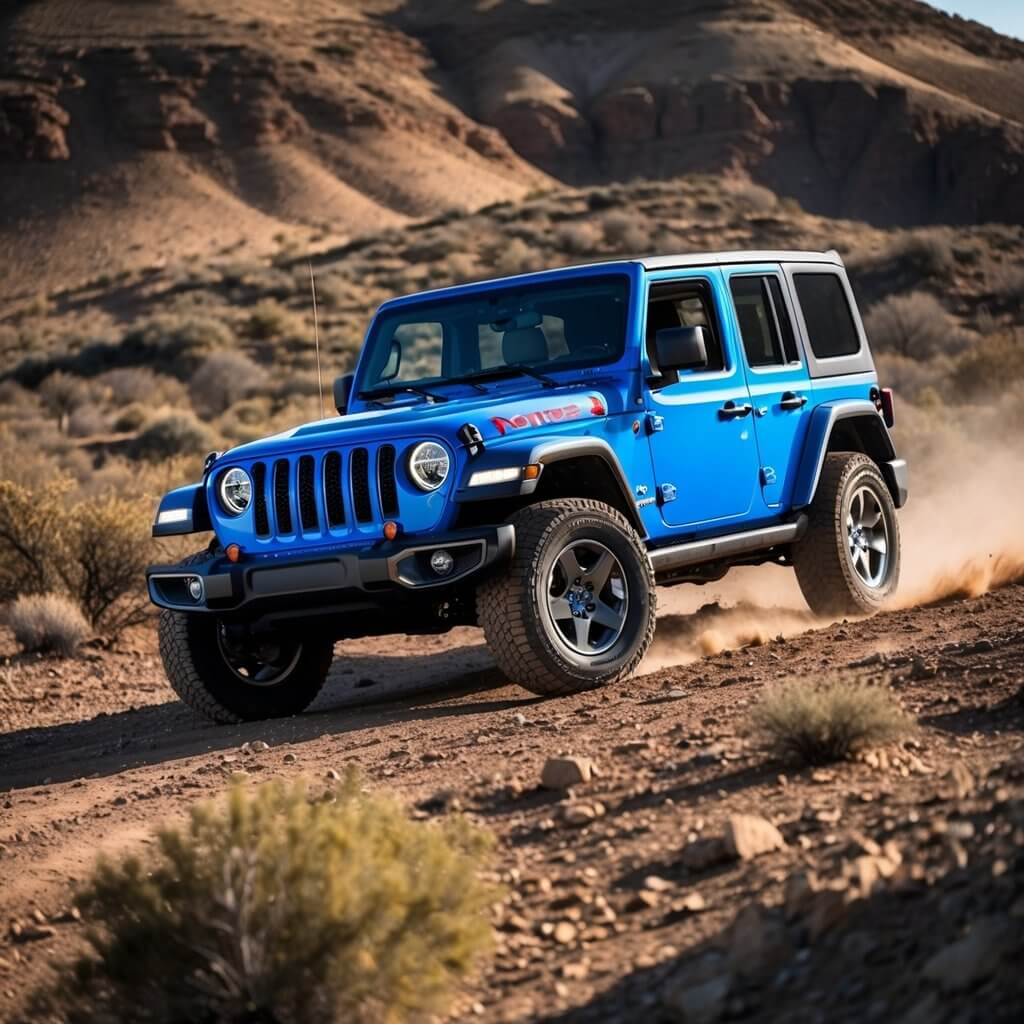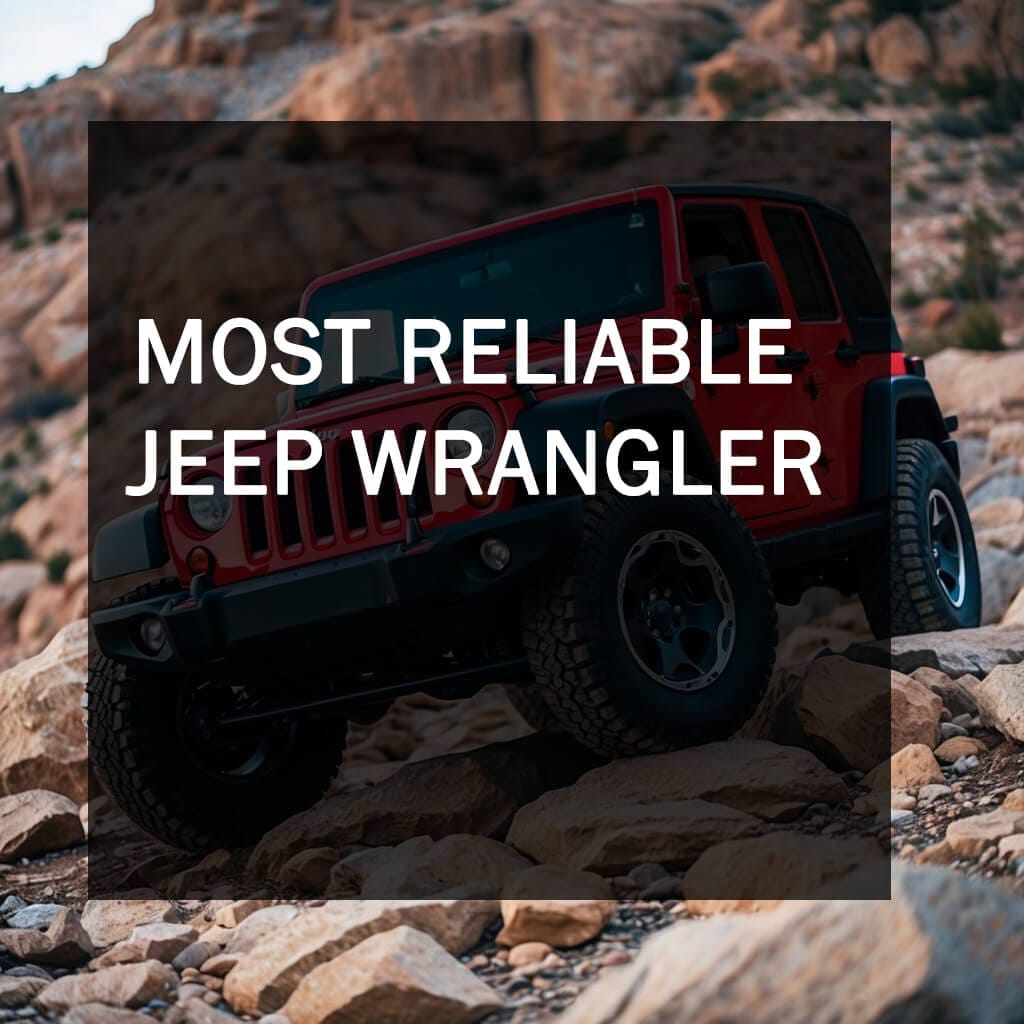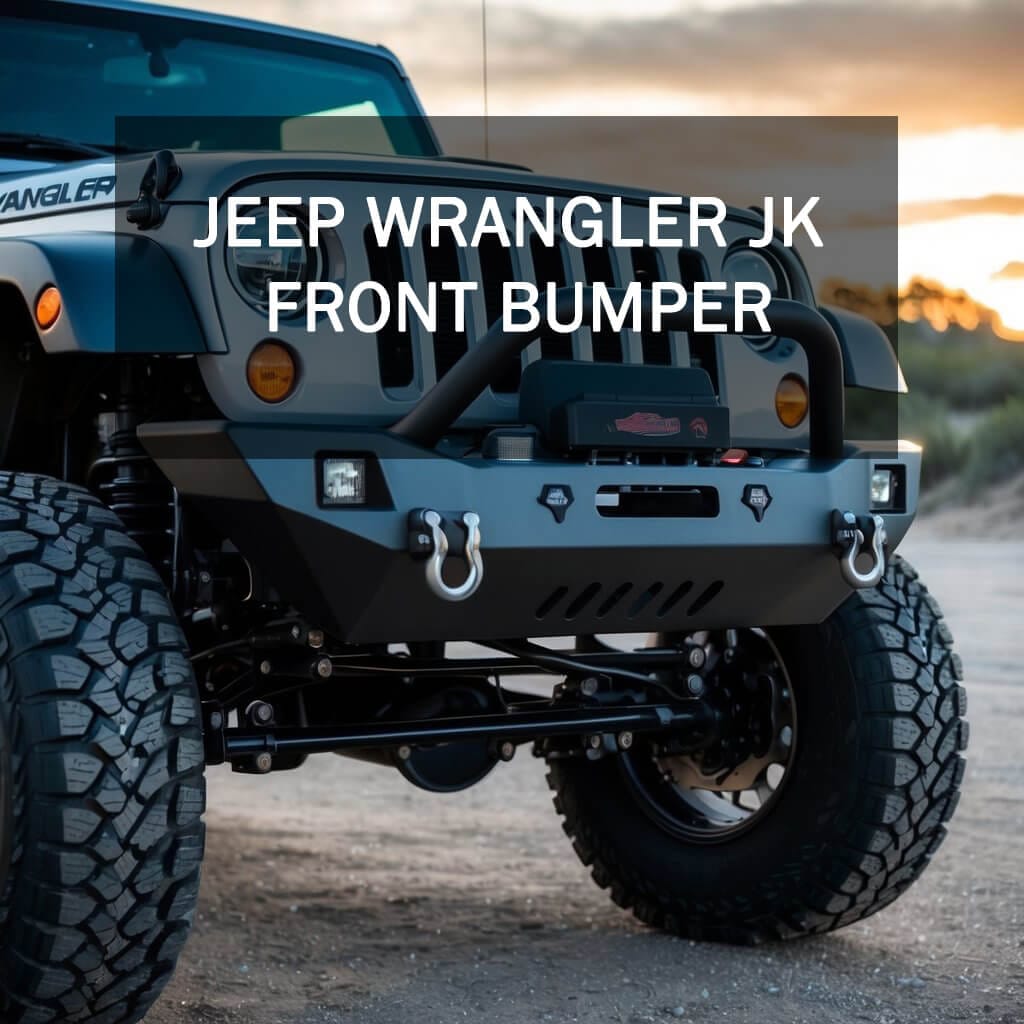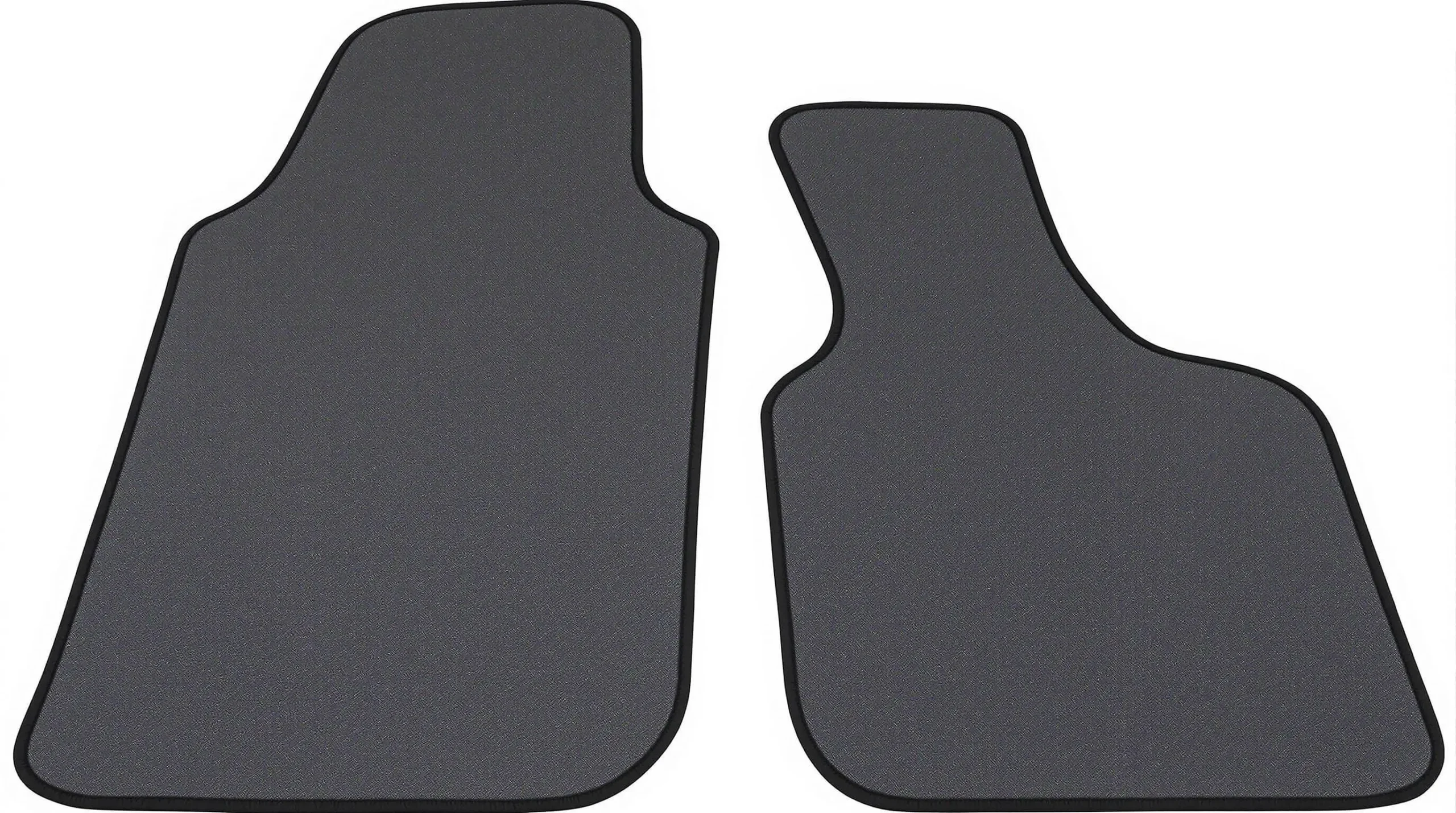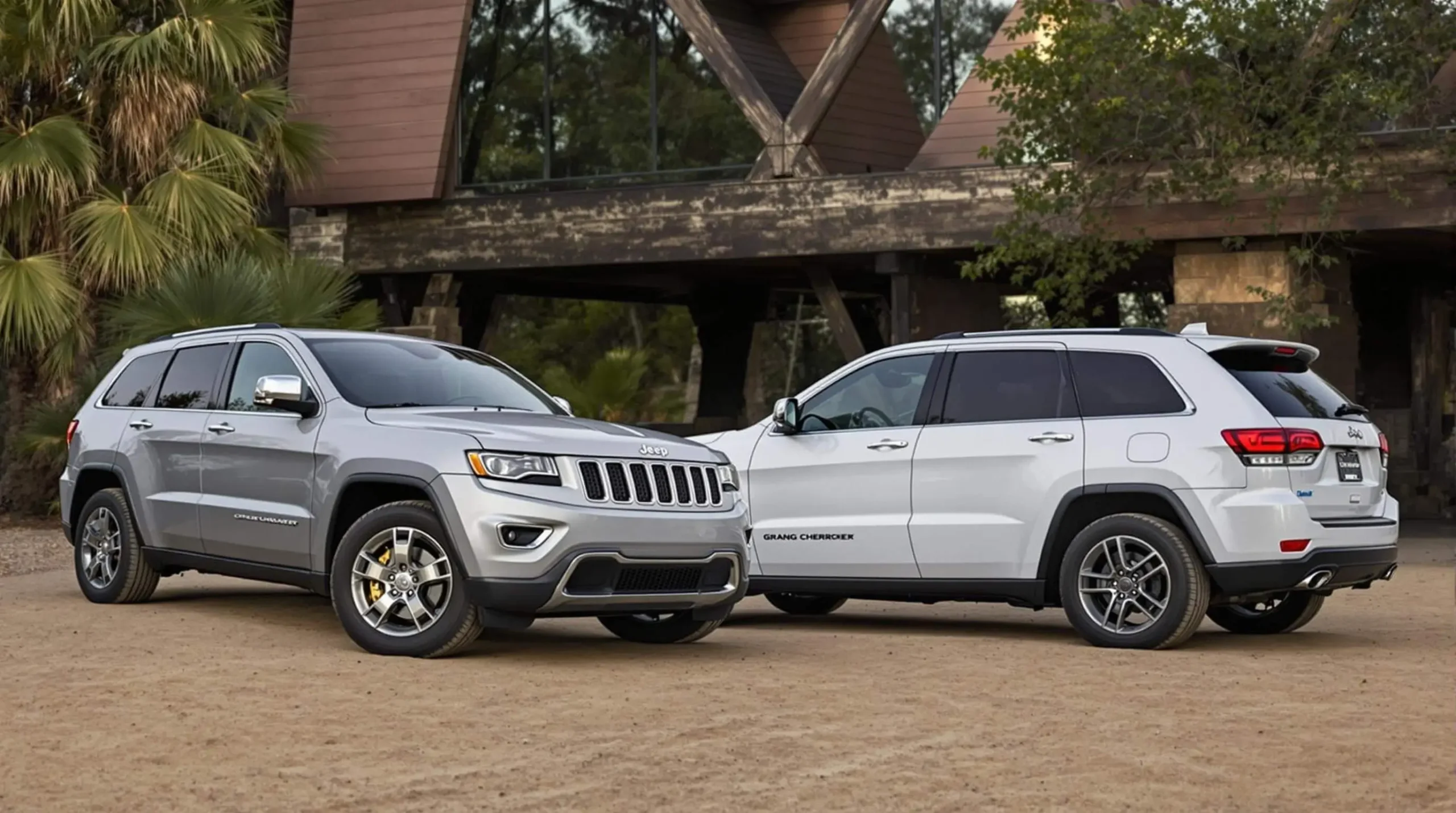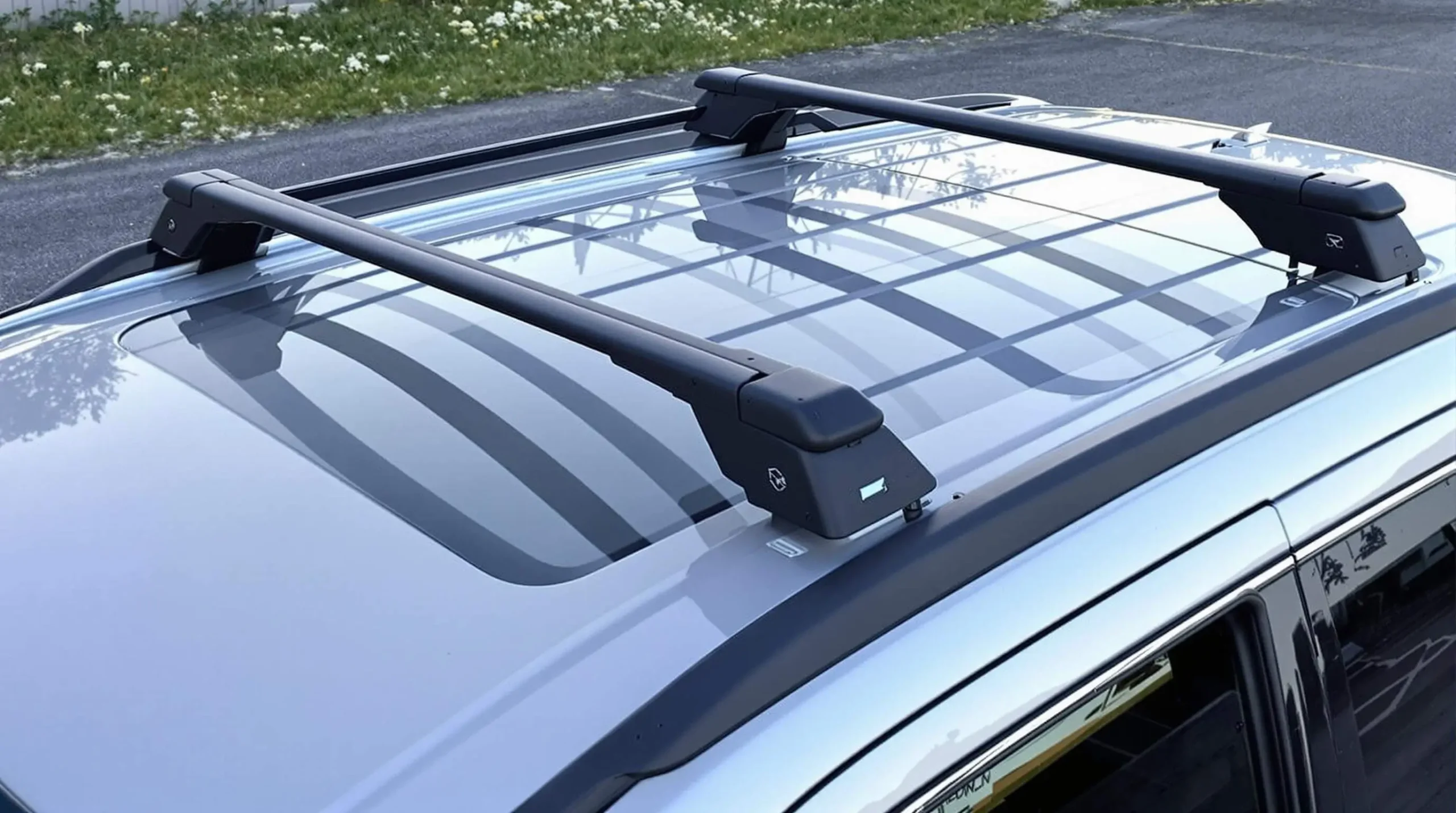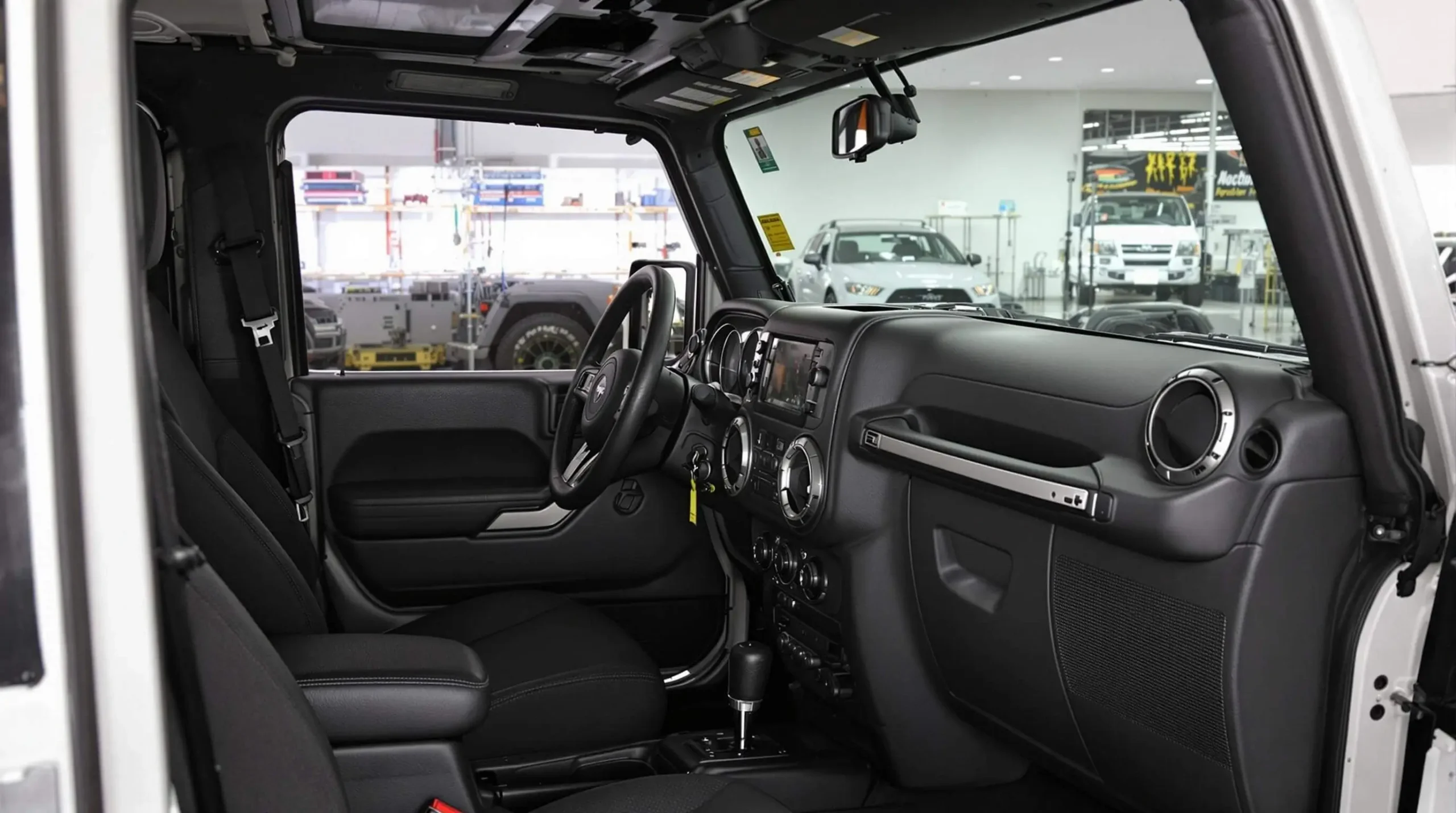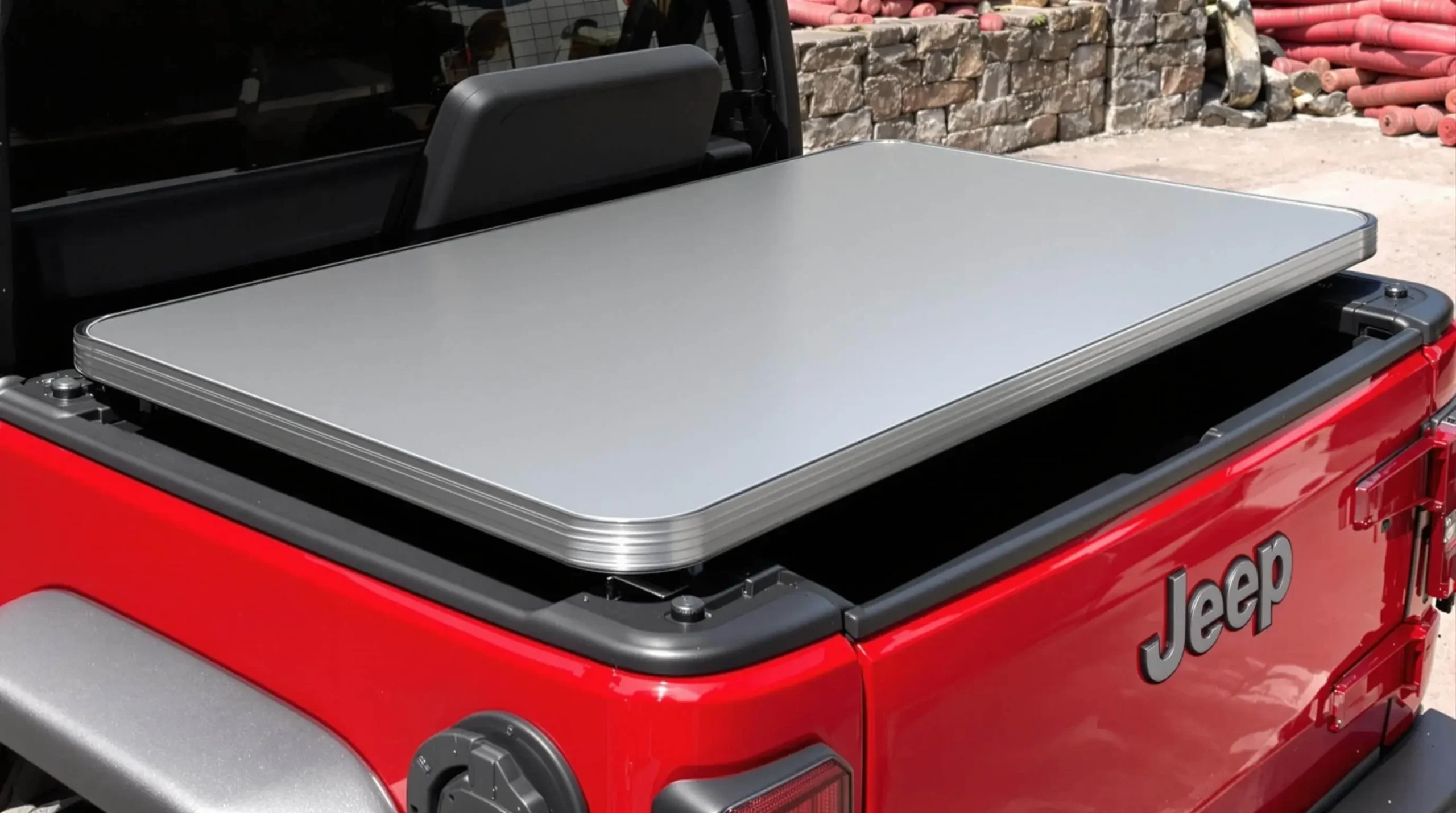Jeep Wrangler 4xe Review: The Ultimate Off-Road PHEV Experience
Are you wondering if Jeep’s first plug-in hybrid can maintain the legendary Wrangler off-road capability while delivering better fuel economy? That’s the question I set out to answer in this comprehensive Jeep Wrangler 4xe review after spending two weeks putting the Jeep Wrangler 4xe through its paces both on city streets and challenging trails.
As someone who’s tested dozens of off-road vehicles over the years, I was initially skeptical about how well the added weight of batteries and electric components would integrate with the Wrangler’s iconic performance. What I discovered about this pioneering hybrid off-roader might surprise you.
Key Takeaways
| Feature | Details | Verdict |
|---|---|---|
| Powertrain | 2.0L turbocharged engine + dual electric motors (375 hp, 470 lb-ft) | Impressive power delivery with instant electric torque |
| Electric Range | 21-22 miles (EPA rated) | Sufficient for many daily commutes |
| Off-Road Capability | Maintains Trail Rated certification; electric torque enhances low-speed crawling | Exceptional, potentially better than gas model in some scenarios |
| Fuel Economy | 49 MPGe combined; 20 MPG gas-only | Significant improvement over standard Wrangler |
| Charging | 2-3 hours (Level 2); 12-14 hours (Level 1) | Easy overnight charging with included cable |
| Price | Starting at $54,735 (2023 model) | Premium over gas models offset by federal tax credit |
| Value | Higher upfront cost but lower operating expenses | Best for those who use electric range regularly |
Query Semantics and Search Intent
When searching for “Jeep Wrangler 4xe review,” most users are looking for comprehensive information about Jeep’s plug-in hybrid Wrangler variant. The search intent typically combines informational and commercial elements, as users want both detailed technical information and guidance on whether the vehicle is worth purchasing. Common search variations include “Wrangler 4xe pros and cons,” “Jeep PHEV off-road capability,” and “is Wrangler 4xe worth it.”
Contextual Hierarchy and Topic Authority
The Jeep Wrangler 4xe represents a significant milestone in the evolution of the iconic Wrangler lineup. As the first electrified version of America’s most recognizable off-roader, it bridges traditional off-road capability with modern efficiency demands. This review places the 4xe within the broader context of both the Wrangler’s heritage and the rapidly evolving hybrid SUV market.
Introduction & Overview
The Jeep Wrangler 4xe (pronounced “four-by-E”) made its debut as part of Jeep’s broader electrification strategy, bringing plug-in hybrid technology to the brand’s most iconic model. Built on the current JL Wrangler platform, the 4xe combines the familiar rugged off-road capability Wrangler enthusiasts expect with the efficiency benefits of electrification.
What makes the 4xe particularly interesting is how Jeep has integrated hybrid technology without compromising the Wrangler’s legendary trail prowess. The weatherproofed electrical components and waterproof battery system ensure that this PHEV can tackle the same challenging terrain as its conventional siblings.
Available in three primary trim levels—Sahara 4xe, Rubicon 4xe, and High Altitude 4xe—the Wrangler 4xe offers various levels of luxury and off-road capability depending on your preferences and budget. Each model comes standard with four-wheel drive and the same hybrid powertrain system, though the Rubicon adds specialized off-road equipment like electronic locking differentials and an electronic disconnect front sway bar.
If you’re familiar with the different Jeep Wrangler models, you’ll find the 4xe variants follow a similar hierarchy, just with the addition of hybrid technology.
Hybrid Powertrain & Technology
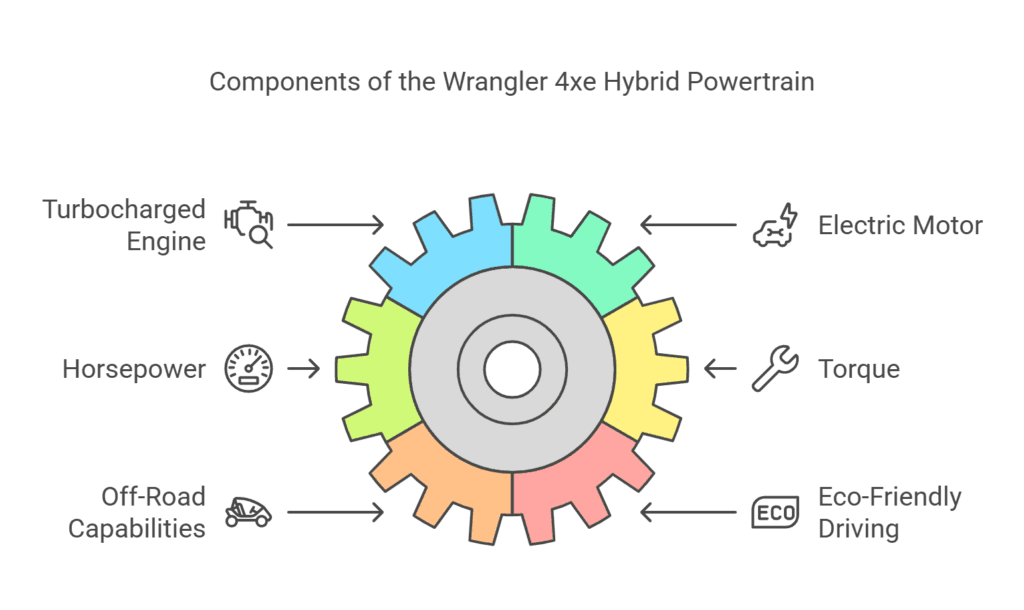
The heart of the Wrangler 4xe is its sophisticated hybrid powertrain, which combines a 2.0-liter turbocharged four-cylinder engine with two electric motors. This system produces a combined 375 horsepower and 470 lb-ft of torque—making it the most powerful Wrangler in the lineup, excluding the V8-powered Rubicon 392.
Powertrain Components & Architecture
The hybrid system uses a unique architecture that integrates two electric motors—one mounted to the engine (P1) that replaces the traditional alternator, and a second motor-generator (P2) mounted to the transmission. This design allows for seamless transitions between power sources while maintaining the Wrangler’s traditional four-wheel-drive system.
The 2.0L turbocharged engine itself is no slouch, and when combined with the instant torque from the electric motors, the 4xe delivers impressive acceleration that belies its hefty 5,100-pound curb weight. The powertrain connects to an 8-speed automatic transmission specifically modified to work with the hybrid system.
What’s particularly impressive is how naturally the various power sources work together. The transitions between electric and gas power are nearly imperceptible in most driving conditions, and the system intelligently manages power delivery based on driving mode and conditions.
Battery System & Electrical Protection
The 4xe houses a 17.3 kWh lithium-ion battery pack beneath the rear seats, which is carefully sealed and protected for off-road adventures. Jeep engineers went to considerable lengths to ensure the high-voltage components could withstand the harsh conditions Wranglers typically encounter.
The battery system includes dedicated cooling circuits to maintain optimal operating temperature, and all high-voltage components feature waterproof sealing that allows the 4xe to ford water up to 30 inches deep—the same rating as conventional Wrangler models.
One thoughtful design element is the placement of the battery, which preserves interior space while maintaining the Wrangler’s center of gravity. The battery management system also includes multiple fail-safes to protect the electrical components during extreme off-road maneuvers or in case of damage.
Charging Infrastructure & Options
Charging the Wrangler 4xe is straightforward. The vehicle comes with a Level 1 charging cable that plugs into any standard 120V household outlet, though charging this way takes approximately 12-14 hours for a full charge. For more convenient daily charging, a Level 2 (240V) charger reduces charging time to just 2-3 hours.
The charging port is located on the front left fender, protected by a push-to-open door that seals against water and debris. A ring of LED lights surrounds the port, providing a visual indicator of charging status visible from a distance.
Unlike some PHEVs that require specialized equipment, the Wrangler 4xe uses the standard J1772 connector, making it compatible with most public charging stations. However, it’s worth noting that the 4xe, like most plug-in hybrids, does not support DC fast charging.
For many owners, overnight charging at home will be the most convenient option, particularly since the 21-mile electric range covers most daily commuting needs.
Driving Modes & Power Management
The 4xe offers three distinct driving modes, accessible through the E-Selec buttons on the dashboard:
- Hybrid Mode: The default setting, which blends power from the electric motors and gas engine to optimize efficiency while maintaining performance.
- Electric Mode: Prioritizes electric-only operation until the battery is depleted or more power is needed than the electric motors can provide.
- eSave Mode: Preserves battery charge or uses the gas engine to restore battery power for later use, ideal for saving electric range for specific portions of your journey.
These modes provide flexibility based on your driving scenario. For example, you might use eSave mode on the highway to preserve electric range, then switch to Electric for zero-emission off-roading or urban driving.
The regenerative braking system also offers a Max Regen feature, activated by a button on the center console. When engaged, this increases energy recuperation during deceleration, allowing for one-pedal driving in many situations and extending electric range.
Performance & Driving Dynamics
With a combined output of 375 horsepower and 470 lb-ft of torque, the Wrangler 4xe delivers impressive performance both on-road and off. The instant torque from the electric motors transforms the driving experience, providing immediate response when accelerating from a stop. This Jeep Wrangler 4xe review found the performance to be among the best in the current Wrangler lineup.
Acceleration & Power Delivery
The 4xe can accelerate from 0-60 mph in approximately 6.0 seconds, making it one of the quickest Wranglers ever produced. The electric motors deliver instantaneous torque, eliminating the turbo lag typically associated with small-displacement turbocharged engines.
This immediate power delivery is particularly noticeable in everyday driving scenarios like merging onto highways or passing slower vehicles. The electric boost feels like having a much larger engine under the hood, though with substantially better fuel economy.
In Electric mode, the 4xe provides sufficient power for most normal driving situations, though hard acceleration will automatically engage the gas engine for additional power. The system does this seamlessly, with no hesitation or delay in power delivery.
Handling & Road Manners
Despite its additional weight—about 700 pounds heavier than a comparable four-door Wrangler Unlimited—the 4xe handles surprisingly well. The lower center of gravity from the battery placement helps counteract some of the top-heaviness typically associated with Wranglers.
The steering remains typically Wrangler-like: somewhat vague on center but improving with speed and providing adequate feedback. The suspension tuning strikes a good balance between off-road articulation and on-road comfort, though body roll in corners reminds you that this is still a tall, trail-ready 4×4.
Highway stability is good by Wrangler standards, though crosswinds can still affect the boxy profile at higher speeds. Overall, the 4xe delivers a more refined on-road experience than you might expect from a vehicle with such serious off-road credentials.
Braking & Regenerative Systems
The braking system in the 4xe deserves special mention for how well it integrates traditional hydraulic brakes with regenerative braking. Unlike some hybrid vehicles where the brake pedal can feel artificial or inconsistent, the 4xe provides progressive, natural-feeling pedal response.
The standard regenerative braking recovers energy during deceleration, but activating the Max Regen feature significantly increases this effect. With Max Regen engaged, lifting off the accelerator creates a pronounced slowing effect similar to engine braking in a manual transmission vehicle, allowing for one-pedal driving in many situations.
This feature is particularly useful in off-road scenarios, where precise speed control without using the brakes can be advantageous. It also extends the electric range by capturing more energy during deceleration.
Efficiency & Real-World Economy
The EPA rates the Wrangler 4xe at 49 MPGe (miles per gallon equivalent) when using both gas and electric power, and 20 MPG when running on gasoline alone. In real-world testing, these figures proved reasonably accurate, though as with any vehicle, your results will vary based on driving style and conditions.
With a fully charged battery, the electric range consistently reached 20-22 miles in mixed driving, with highway speeds naturally depleting the battery faster than city driving. Once the battery is depleted, the 4xe functions like a conventional hybrid, though without the efficiency advantages of purpose-built hybrid systems like those found in the Toyota RAV4 Prime.
For drivers who can charge regularly and whose daily commutes fall within the electric range, the efficiency improvement over a standard Wrangler can be dramatic. Those who frequently exceed the electric range or cannot charge consistently will see more modest efficiency gains.
Off-Road Capability
The Wrangler’s legendary off-road capability remains fully intact in the 4xe, and in some ways, the electric component enhances the experience. All 4xe models maintain the Trail Rated certification, confirming they meet Jeep’s standards for off-road performance.
Off-Road Specifications & Ratings
The 4xe maintains virtually identical off-road specifications to equivalent conventional Wranglers:
- Ground Clearance: 10.8 inches
- Approach Angle: 44 degrees (Rubicon)
- Breakover Angle: 22.5 degrees
- Departure Angle: 35.6 degrees
- Water Fording: 30 inches
- Suspension Travel: Up to 10.5 inches (Rubicon)
These figures place the 4xe in the same elite category as other Wranglers when it comes to tackling challenging terrain. The Rubicon 4xe adds further capability with its 4:1 transfer case, electronic locking differentials, electronic sway bar disconnect, and 33-inch all-terrain tires.
Electric Advantages in Off-Road Scenarios
The electric component of the powertrain offers unique advantages in off-road driving. The instant torque delivery from the electric motors provides exceptional control during slow-speed maneuvers like rock crawling, where precise throttle control is crucial.
In Electric mode, the 4xe can traverse trails in near silence, creating a novel outdoor experience where you can hear nature around you rather than engine noise. This quiet operation also makes communication between spotters and drivers easier on technical trails.
The Max Regen feature provides excellent speed control when descending steep grades, often eliminating the need to ride the brakes. This mimics the engine braking effect that experienced off-roaders value in manual transmission vehicles.
For extended trail sessions beyond the electric range, the 4xe seamlessly transitions to using the gas engine, ensuring you won’t be stranded due to battery depletion.
Water Fording & Environmental Resilience
Despite the addition of a high-voltage battery system, the 4xe maintains the same 30-inch water fording capability as standard Wranglers. Jeep engineers placed particular emphasis on sealing and protecting electrical components from water, dust, and debris.
The battery pack features dedicated sealing and protection, while high-voltage cables and components use waterproof connectors and reinforced insulation. The system includes automatic disconnects that isolate the battery in case of damage or water intrusion, providing an additional safety layer during extreme off-road use.
The underbody skid plates protect both conventional and hybrid-specific components, allowing the 4xe to handle the same rough terrain as other Wranglers without concern for damaging sensitive parts.
Comparison with Traditional Wranglers
In direct comparison with conventional Wranglers, the 4xe holds its own remarkably well. The additional weight is noticeable in certain scenarios—particularly in deep sand or mud where momentum matters—but the instant torque from the electric motors often compensates for this disadvantage.
The Rubicon 4xe, with its additional off-road equipment, remains the most capable variant, matching or exceeding the performance of its gas-powered equivalent in most situations. Some owners report that the precise control afforded by the electric motors actually improves capability in technical rock-crawling scenarios.
The primary limitation for extended off-road adventures is the electric range, though the hybrid system continues to function effectively once the battery is depleted. For weekend warriors who take on moderate trails, this limitation is unlikely to impact the experience significantly.
Compared to the Jeep Gladiator 4xe vs Wrangler 4xe, the Wrangler offers better maneuverability on tight trails due to its shorter wheelbase, though the Gladiator provides more utility with its pickup bed.
On-Road Experience & Daily Usability
While off-road prowess is expected from any Wrangler, the 4xe also needs to function as a daily driver. Here, the hybrid system brings notable improvements to the on-road experience compared to conventional Wranglers.
Ride Quality & Comfort
The 4xe delivers a ride quality typical of the current JL Wrangler generation—firmer than most crossovers but compliant enough for daily use. The additional weight of the hybrid components actually helps dampen some road imperfections, resulting in a slightly smoother ride than lighter Wrangler variants.
Suspension tuning balances off-road articulation with on-road comfort reasonably well. The Sahara and High Altitude trims, with their road-focused suspension setups and larger wheels, provide a more comfortable highway ride than the off-road-oriented Rubicon with its stiffer suspension and knobby tires.
Seat comfort is good for shorter journeys but can become tiresome on longer highway stretches—a common Wrangler characteristic. The upright seating position provides excellent visibility, though, making urban navigation easier despite the vehicle’s size.
Noise, Vibration & Harshness (NVH)
NVH characteristics represent one area where the 4xe significantly improves upon traditional Wranglers. In Electric mode, the cabin is remarkably quiet, with only wind noise and tire rumble reminding you that you’re in a Wrangler.
Even when the gas engine activates, it operates more smoothly and quietly than the V6 found in most Wranglers. The hybrid system’s power management allows the engine to operate in its optimal range more frequently, reducing harsh sounds and vibrations.
At highway speeds with the hardtop installed, the 4xe still generates considerable wind noise due to its boxy shape, but conversation is easier than in conventional Wranglers. With the soft top or with the panels removed, the typical open-air Wrangler experience remains intact, albeit with less engine noise in hybrid or electric modes.
Electric-Only Driving Experience
The pure electric driving experience is perhaps the most surprising aspect of the 4xe. In Electric mode, the Wrangler transforms into a quiet, smooth operator—a stark contrast to its usual character.
The electric motors provide sufficient power for normal driving, with a particularly responsive feel around town. The lack of engine noise enhances the open-air experience when the top is down or removed, creating a unique connection with the surroundings.
The 21-mile EPA-rated electric range proves sufficient for many commuting needs, though highway speeds deplete the battery more quickly. In mixed driving, expect 17-22 miles of real-world electric range depending on conditions, driving style, and climate control usage.
For those with short commutes who can charge at home, it’s entirely possible to handle daily driving without using gasoline, saving the combustion engine for longer trips or when additional power is needed.
Practicality & Everyday Utility
Despite the addition of hybrid components, the 4xe maintains most of the practicality found in four-door Wrangler models. The battery placement under the rear seat preserves the cargo area, which offers 27.7 cubic feet behind the rear seats and 67.4 cubic feet with the rear seats folded.
The rear seats still fold flat for larger cargo, and the 4xe retains the removable doors, roof panels, and fold-down windshield that make the Wrangler unique. Installing these features requires no special consideration for the hybrid components.
One practical limitation is towing capacity, which drops to 3,500 pounds compared to the 3,800 pounds of V6-powered Wrangler Unlimited models. This reduction is minor but worth noting for those who frequently tow heavier loads.
The charging cable storage is well-designed, with a dedicated space under the rear cargo floor that keeps it secure without intruding on usable cargo space.
Interior, Technology & Features
Inside, the 4xe closely resembles other current-generation Wranglers, with a few hybrid-specific additions to the displays and controls. The interior balances ruggedness with modern technology and comfort features.
Interior Design & Quality
The interior design follows the familiar Wrangler aesthetic—upright, functional, and relatively straightforward. Material quality varies by trim level, with Sahara and High Altitude models featuring more soft-touch surfaces and premium materials than the more utilitarian Rubicon.
Blue accent stitching and trim pieces distinguish the 4xe interior from conventional Wranglers, along with 4xe badging on the seats and trim. These blue elements are subtle but effective reminders of the vehicle’s electrified nature.
Build quality is generally good, with panels fitting together well and controls operating with satisfying precision. The interior materials are chosen for durability rather than luxury, with surfaces that can be easily cleaned after off-road adventures—a practical consideration for a vehicle designed to get dirty.
Infotainment & Connectivity
The 4xe comes standard with Jeep’s Uconnect 5 infotainment system and an 8.4-inch touchscreen display. This system represents a significant improvement over previous Jeep infotainment offerings, with responsive performance, clear graphics, and logical menu structures.
Standard connectivity features include:
- Apple CarPlay and Android Auto (wireless)
- Bluetooth audio and phone connectivity
- SiriusXM satellite radio
- Built-in navigation
- 4G LTE Wi-Fi hotspot capability
- Multiple USB and USB-C ports
The system’s performance is quick and intuitive, with minimal lag when switching between functions. Voice recognition works reasonably well for navigation and phone commands, though it sometimes struggles with more complex requests.
Audio quality from the standard system is acceptable but not exceptional. The optional Alpine premium audio system provides a notable improvement, with better clarity and stronger bass response.
Hybrid-Specific Displays & Controls
The hybrid system adds several unique elements to the interior. The E-Selec buttons for choosing drive modes are prominently positioned to the left of the steering wheel, allowing easy access while driving. The Max Regen feature has its own dedicated button on the center console.
The instrument cluster and infotainment screen include hybrid-specific displays showing power flow, battery status, and energy usage statistics. These displays are informative without being overwhelming, providing useful feedback on the system’s operation.
A unique power meter replaces the traditional tachometer, showing whether power is coming from the battery, engine, or regenerative braking. This helpful visual aid helps drivers maximize efficiency by adjusting their driving style based on real-time feedback.
The Uconnect system also includes specific pages for monitoring and scheduling charging, viewing energy usage history, and planning routes that incorporate charging stations.
Comfort & Convenience Features
The 4xe offers most of the comfort and convenience features available in the wider Wrangler lineup. Standard equipment varies by trim, but all models include:
- Dual-zone automatic climate control
- Power windows and door locks
- Keyless entry and push-button start
- Tilt/telescoping steering wheel
- Automatic headlights
Higher trim levels add luxury touches like heated front seats and steering wheel, leather upholstery, and ambient interior lighting. The High Altitude trim brings the most premium experience with quilted leather seats, color-matched exterior trim, and additional convenience features.
One welcome feature is the ability to pre-condition the cabin while plugged in, allowing you to heat or cool the interior using grid power rather than the battery. This preserves the electric range for driving and ensures a comfortable cabin from the moment you start your journey.
Ownership Experience & Costs
Owning a Wrangler 4xe differs from conventional Wrangler ownership in several key areas, particularly regarding costs, charging, and maintenance considerations.
Purchase Price & Incentives
The Wrangler 4xe commands a significant premium over non-hybrid models, with a starting MSRP of $54,735 for the base Sahara 4xe (2023 model year). This represents approximately $10,000 more than a comparably equipped non-hybrid Wrangler Unlimited.
However, this price gap narrows considerably when federal tax incentives are factored in. As a plug-in hybrid with a battery larger than 7 kWh, the 4xe qualifies for federal tax credits of up to $7,500 (as of early 2023), though this amount may change based on future legislation.
Many states offer additional incentives, which can further reduce the effective purchase price. In some locations, the combination of federal and state incentives can bring the 4xe’s cost much closer to equivalent non-hybrid models.
Resale value for the 4xe appears strong based on early data, with the unique combination of off-road capability and electrification maintaining good value retention. Jeep products traditionally hold their value well, and the 4xe’s position as the most fuel-efficient Wrangler enhances this advantage.
Charging Costs & Infrastructure Needs
Charging costs vary significantly based on local electricity rates, but in most areas, charging the 4xe’s 17.3 kWh battery costs $2-$4 for a full charge. This translates to approximately 10-15 cents per electric mile—substantially less than the cost of gasoline.
For home charging, most owners will want to install a Level 2 (240V) charger, which costs between $300-$700 for the unit plus installation expenses that vary based on your home’s electrical system. Many utility companies offer rebates or incentives for installing home charging equipment.
While the included Level 1 charger works with standard household outlets, the 12-14 hour charging time makes it impractical for daily use unless you have a very long overnight period available for charging. The Level 2 charger reduces this to 2-3 hours, making it easy to recharge even during brief stops at home.
Public charging infrastructure continues to expand, but for most 4xe owners, home charging will provide the most convenient and cost-effective option. The relatively short electric range means long-distance travel will still rely primarily on the gasoline engine.
Maintenance & Reliability Projections
Maintenance for the 4xe includes elements of both conventional and electrified vehicles. The 2.0L turbocharged engine requires regular maintenance like oil changes, though these may be less frequent if you primarily operate in electric mode.
The hybrid-specific components, including the high-voltage battery, come with an 8-year/100,000-mile warranty, providing peace of mind regarding these more expensive parts. The standard powertrain warranty covers 5 years or 60,000 miles.
Long-term reliability remains somewhat uncertain as the 4xe is still relatively new to the market. However, the hybrid system uses proven technology, and initial reliability reports are encouraging. The additional complexity compared to conventional Wranglers does introduce more potential failure points, but the comprehensive warranty coverage helps mitigate this concern.
Scheduled maintenance costs should be similar to conventional Wranglers, though with potentially longer intervals between oil changes for drivers who frequently use electric mode. The regenerative braking system may also extend brake pad life compared to traditional systems.
Environmental Benefits & Sustainability
The environmental benefits of the 4xe depend heavily on how it’s used. Drivers who regularly charge and operate primarily in electric mode will see significant emissions reductions compared to conventional Wranglers.
For a typical driver who charges daily and has a commute within the electric range, the 4xe can reduce gasoline consumption by 50% or more compared to a standard Wrangler. This translates to substantial CO2 emissions reductions, particularly if the electricity comes from renewable sources.
The ability to drive trails in Electric mode also reduces noise pollution and local emissions in natural environments—an advantage that aligns well with outdoor enthusiasts’ desire to preserve the landscapes they enjoy.
Jeep has also emphasized sustainability in the 4xe’s production, with increased use of recycled materials and more efficient manufacturing processes, according to Motor Authority.
Competitive Analysis
The Wrangler 4xe occupies a unique niche as a plug-in hybrid off-road vehicle. Its closest competitors come from various segments, including other PHEVs, conventional off-roaders, and even within the Jeep lineup itself.
Comparison with PHEV Competitors
Few direct PHEV competitors match the Wrangler 4xe’s off-road capability. The closest alternatives include:
Toyota RAV4 Prime: Offers better electric range (42 miles) and overall efficiency (94 MPGe) but significantly less off-road capability. The RAV4 Prime delivers impressive performance with 302 combined horsepower and quicker acceleration than the 4xe, all at a similar price point after incentives.
Mitsubishi Outlander PHEV: Provides decent all-wheel-drive capability and similar electric range to the 4xe, but lacks true off-road credentials. It’s more affordable but less powerful and refined.
Land Rover Defender P400e: The most direct competitor in terms of off-road capability, the Defender PHEV offers similar electric range and performance but at a significantly higher price point. It provides a more luxurious experience but lacks the Wrangler’s open-air options.
For buyers primarily concerned with efficiency rather than off-road prowess, these alternatives may offer better daily driving experiences and fuel economy. However, none can match the Wrangler’s trail capabilities or iconic design.
Conventional Wrangler Variants Comparison
Within the Wrangler lineup, the 4xe presents an interesting value proposition compared to conventional models:
Vs. 3.6L V6 Wrangler: The standard V6 Wrangler costs approximately $10,000 less (before incentives) and offers similar off-road capability with less complexity. However, it delivers significantly worse fuel economy (20 MPG combined vs. 49 MPGe) and less power.
Vs. 2.0L Turbo Wrangler: The non-hybrid turbocharged model provides similar on-road performance but lacks the electric-only capability and efficiency benefits. The price gap is smaller than with the V6, making the 4xe more attractive after incentives.
Vs. Wrangler Rubicon 392: The V8-powered Rubicon offers more raw power but at a higher price point and with much worse fuel economy. The 4xe actually delivers similar real-world acceleration with dramatically better efficiency.
For Wrangler enthusiasts who drive significant daily miles, the 4xe’s potential for gasoline savings can offset the higher purchase price within a few years, particularly when incentives are factored in.
Off-Road Capable Alternatives
Looking beyond PHEVs, several conventional off-roaders compete with the Wrangler 4xe:
Ford Bronco: Ford’s revived Bronco offers comparable off-road capability and similar open-air features, but without a hybrid option. It provides a more comfortable on-road experience but lacks the efficiency benefits of the 4xe.
Toyota 4Runner: The aging 4Runner offers proven reliability and good off-road capability but falls behind in technology, efficiency, and on-road manners. A next-generation model with hybrid options is rumored but not yet available.
Land Rover Defender: The non-hybrid Defender offers excellent off-road capability with more on-road refinement than the Wrangler, but at a higher price point and without plug-in benefits unless you opt for the expensive P400e variant.
For pure off-road enthusiasts who rarely drive in urban environments, these conventional alternatives may make more sense. However, for those who balance trail adventures with daily commuting, the 4xe’s efficiency advantages become more compelling.
Verdict & Recommendations
After extensive testing across various conditions, the Jeep Wrangler 4xe emerges as a compelling option for a specific type of buyer—one who values both off-road adventure and environmental consciousness. This Jeep Wrangler 4xe review concludes that it successfully balances traditional Wrangler capability with modern efficiency needs.
Strengths & Weaknesses Summary
Strengths:
- Exceptional power and torque from the hybrid powertrain
- Maintains full off-road capability despite added hybrid components
- Significant fuel savings for those who charge regularly
- Unique silent off-roading experience in Electric mode
- Tax incentives substantially offset the price premium
- Most powerful Wrangler model available (excluding the 392)
- Instant torque improves rock crawling and off-road control
Weaknesses:
- Limited electric range compared to some other PHEVs
- Higher purchase price than conventional Wranglers
- Added weight affects some off-road scenarios
- Reduced fuel economy when operating on gasoline only
- Increased complexity may affect long-term reliability
- Requires home charging setup for maximum benefit
Ideal Buyer Profile
The Wrangler 4xe is ideally suited for:
- The Environmentally Conscious Off-Roader: Outdoor enthusiasts who want to minimize their environmental impact while still enjoying trail adventures.
- Urban Adventurers: Drivers with weekday commutes within the electric range who take weekend off-road trips. They can operate on electricity during the week and have the gas engine available for longer adventures.
- Technology Enthusiasts: Early adopters who appreciate the cutting-edge hybrid technology and are willing to pay a premium for the latest features.
- High-Income Wrangler Fans: Buyers who can afford the price premium and want the most capable, efficient Wrangler available.
The 4xe makes less sense for those who rarely drive off-road or who would rarely be able to charge the battery. For these users, a conventional Wrangler or a more efficiency-focused PHEV like the RAV4 Prime might be more appropriate.
Final Rating & Recommendation
Overall Rating: 8.5/10
The Jeep Wrangler 4xe successfully combines the iconic Wrangler experience with modern electrification, delivering a vehicle that makes few compromises in either direction. Throughout this Jeep Wrangler 4xe review, we’ve seen that it retains the off-road capability, open-air freedom, and distinctive character that Wrangler enthusiasts demand while adding efficiency, refinement, and environmental benefits.
For the right buyer—particularly one who can charge regularly and values both efficiency and capability—the 4xe represents the future of off-roading. The tax incentives make the price premium more palatable, and the potential fuel savings over time further enhance the value proposition.
While not without flaws, the Wrangler 4xe demonstrates that electrification can enhance rather than detract from traditional off-road vehicles. It sets a promising precedent for Jeep’s broader electrification plans and proves that going green doesn’t mean sacrificing capability or adventure.
Frequently Asked Questions
How far can the Jeep Wrangler 4xe go on electric power alone?
The Wrangler 4xe has an EPA-rated electric range of 21 miles, though real-world results typically vary between 17-22 miles depending on driving conditions, speed, and climate control usage. City driving typically yields better electric range than highway cruising.
Does the Wrangler 4xe still have good off-road capability with the added weight?
Yes, the Wrangler 4xe maintains excellent off-road capability despite weighing about 700 pounds more than a standard four-door Wrangler. The instant torque from the electric motors actually enhances control during technical off-road driving, particularly rock crawling. All 4xe models maintain the Trail Rated certification, and the Rubicon 4xe includes the same specialized off-road equipment as its gas-powered counterpart.
How long does it take to charge the Wrangler 4xe?
With the included Level 1 charger and a standard 120V household outlet, a full charge takes approximately 12-14 hours. Using a Level 2 (240V) charger reduces charging time to just 2-3 hours. The 4xe does not support DC fast charging, which is common for plug-in hybrids.
Is the Wrangler 4xe worth the extra cost over a regular Wrangler?
The value proposition depends on your driving habits. For drivers who can charge regularly and whose daily commutes fall within the electric range (approximately 20 miles), the efficiency improvements and potential fuel savings can offset the higher purchase price over time, especially when federal tax credits and state incentives are factored in. The 4xe also offers more power and torque than standard Wrangler models, which some buyers will value.
What happens if the battery runs out of charge during an off-road trip?
Nothing dramatic happens when the battery depletes—the vehicle seamlessly transitions to operating like a conventional hybrid, with the gas engine providing primary power. You’ll still have four-wheel drive and all the typical Wrangler capability, just without the ability to drive in pure electric mode until you recharge. The hybrid system will continue to capture energy through regenerative braking, providing small electric boosts when beneficial.
Can I remove the doors and roof like on a regular Wrangler?
Yes, the 4xe maintains all the signature Wrangler open-air features. The doors are removable, the windshield folds down, and depending on your configuration, you can remove the hardtop panels or fold down the soft top. The hybrid components don’t interfere with these features, and all electrical components are properly protected from the elements.
How does the 4xe compare to other plug-in hybrid SUVs like the Toyota RAV4 Prime?
The RAV4 Prime offers better electric range (42 miles vs. 21 miles) and overall efficiency (94 MPGe vs. 49 MPGe) than the Wrangler 4xe. However, the 4xe provides significantly better off-road capability, open-air freedom, and the iconic Jeep styling. The RAV4 Prime is more practical as a daily driver and more efficient for longer trips, while the 4xe excels in off-road adventures and distinctive character.
Are there any special maintenance requirements for the 4xe?
The hybrid system doesn’t require special regular maintenance beyond what’s covered in the owner’s manual. The gas engine still needs regular oil changes and typical maintenance, though potentially less frequently if you primarily drive in electric mode. The high-voltage battery and hybrid components are covered by an 8-year/100,000-mile warranty, providing peace of mind for these more complex systems.
Can I install aftermarket off-road modifications on the 4xe?
Yes, the aftermarket has quickly embraced the 4xe with lift kits, larger tires, bumpers, and other common Wrangler modifications. However, it’s important to use products specifically designed for the 4xe, as its weight distribution and some component locations differ from standard Wranglers. Always ensure modifications don’t interfere with hybrid system components, particularly high-voltage lines and the battery pack.

